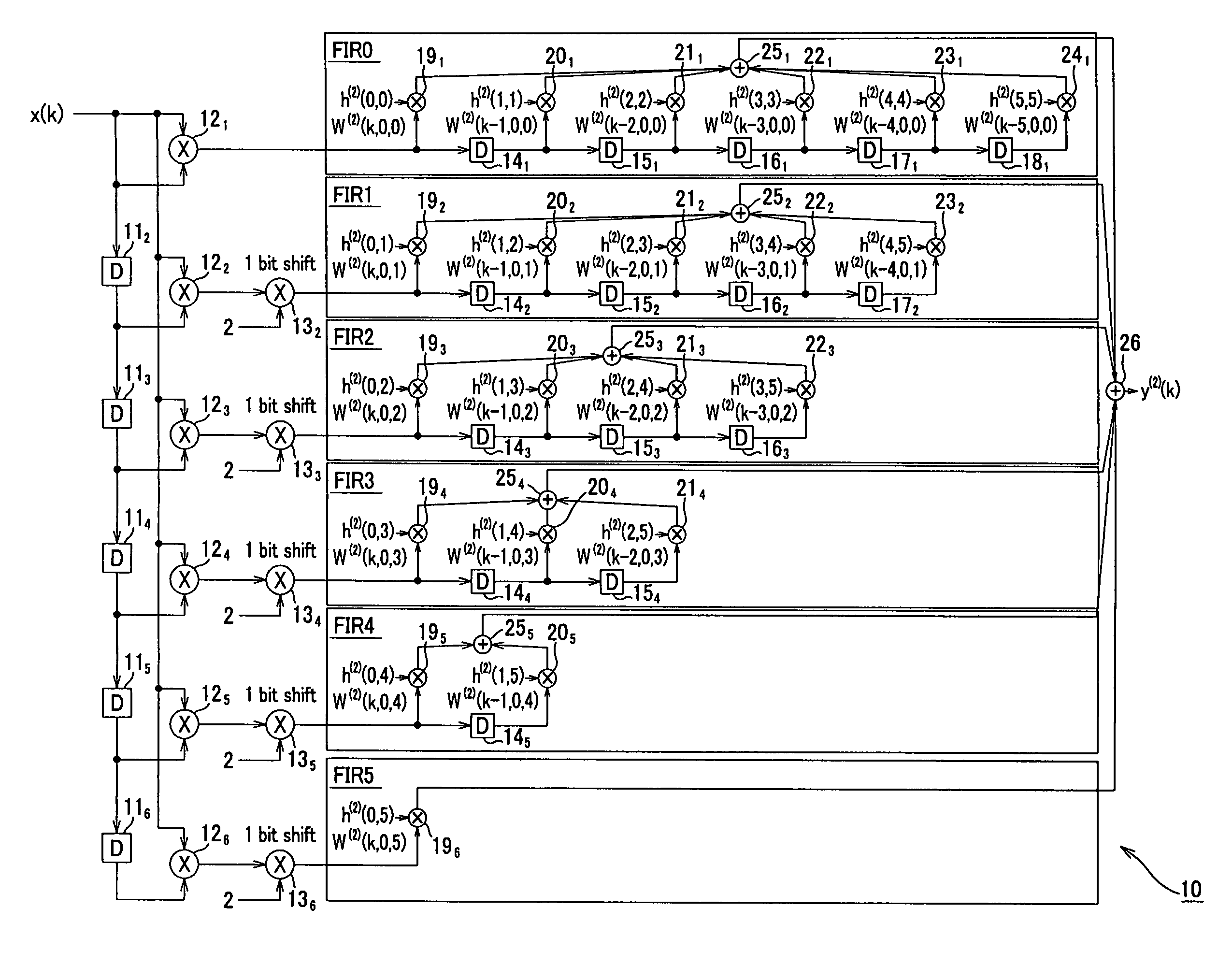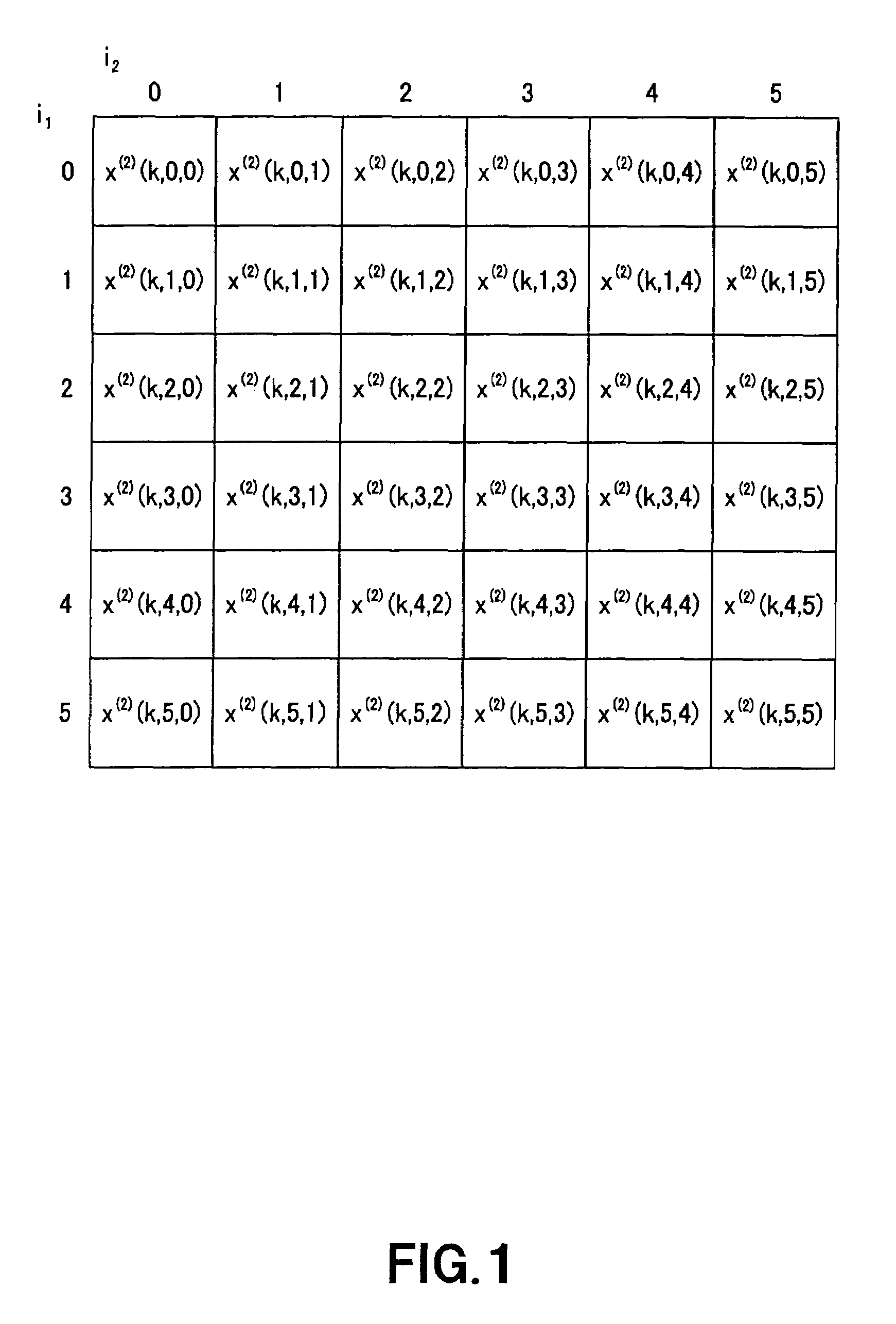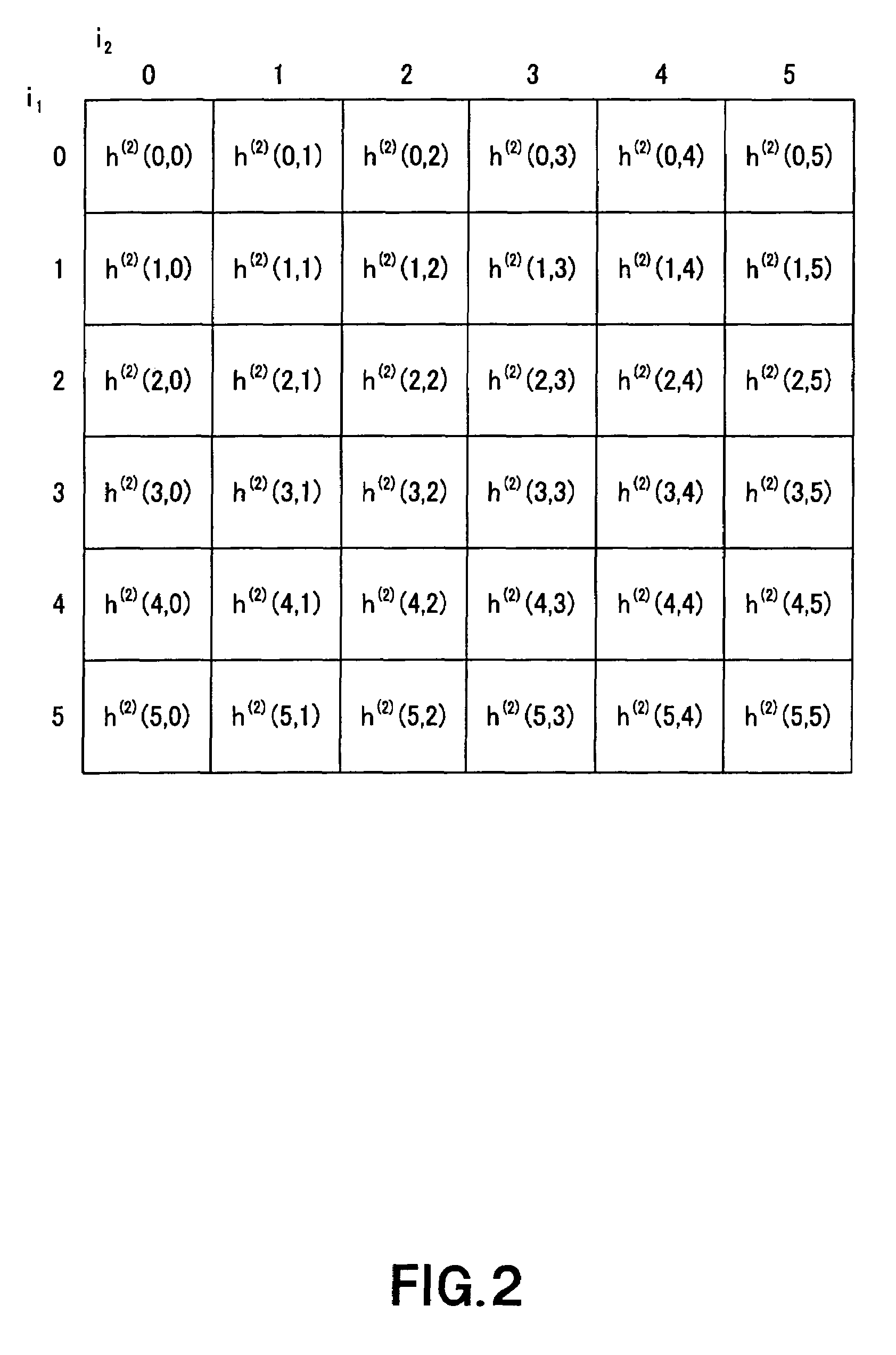Signal processing device and method, and signal decoding device and method
a signal processing and signal technology, applied in the direction of digital signal error detection/correction, pulse manipulation, pulse technique, etc., can solve the problems of non-linear properties presented in the reproduced signal, inability to improve the entire performance, and deter the improvement of the whole performance, so as to achieve the effect of reducing the number of multiplication operations
- Summary
- Abstract
- Description
- Claims
- Application Information
AI Technical Summary
Benefits of technology
Problems solved by technology
Method used
Image
Examples
Embodiment Construction
[0050]Before proceeding to explanation of an embodiment of the present invention, the technique of a Volterra filter, so far proposed and used for non-linear equalization of a signal, exhibiting non-linear distortion, will now be explained.
[0051]With a tap length of a linear section M1 and with a tap length of a quadratic section M2, a routine second-order Volterra filter is represented by the following equation (4):
[0052]y(k)=∑i=0M1-1h(1)(i)·x(k-i)+∑i1=0M2-1∑i2=0M2-1h(2)(i1,i2)·x(k-i1)·x(k-i2)(4)
where y(k) is an output signal of the second-order Volterra filter at time k, x(k) is an input signal to the second-order Volterra filter at time k, h(1)(i) is a tap coefficient of the linear section of the second-order Volterra filter (i=0, 1, . . . M1−1) and h(2)(i1, i2) is a tap coefficient of the quadratic section of the second-order Volterra filter (i1=0, 1, . . . M2−1; i2=0, 1, . . . M2−1).
[0053]For completing calculations for one cycle for the right side of the equation (4),...
PUM
| Property | Measurement | Unit |
|---|---|---|
| time | aaaaa | aaaaa |
| unit time | aaaaa | aaaaa |
| preset time | aaaaa | aaaaa |
Abstract
Description
Claims
Application Information
 Login to View More
Login to View More - R&D
- Intellectual Property
- Life Sciences
- Materials
- Tech Scout
- Unparalleled Data Quality
- Higher Quality Content
- 60% Fewer Hallucinations
Browse by: Latest US Patents, China's latest patents, Technical Efficacy Thesaurus, Application Domain, Technology Topic, Popular Technical Reports.
© 2025 PatSnap. All rights reserved.Legal|Privacy policy|Modern Slavery Act Transparency Statement|Sitemap|About US| Contact US: help@patsnap.com



